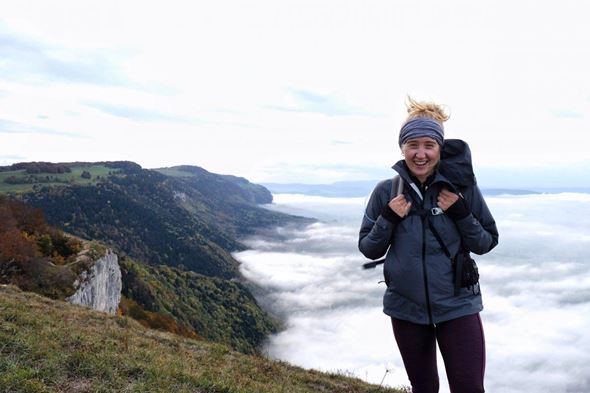
What to wear hiking? Hiking has been an increasingly popular pastime since the epidemic began, and it seems that this trend will continue. It’s important to know what to wear hiking to be comfortable and ready for everything the trails have in store, even if you’re going to the park. Checklists covering essential criteria and more in-depth information specific to each season are offered here.
Please take note of the following important hiking rule for You should always have extra warm and waterproof clothing, shelter, and extra food and drink in your bag.
Day hikers are more prone to fatal incidents than backpackers are because they are more likely to be caught unprepared. It may seem absurd to take a hiking gear for women, fleece jacket, camping clothes, warm leggings, a blanket, and a tiny tent in your daypack when sunny and 75 degrees.
There’s a good potential that you’ll spend the night or more in the wilderness if you take a wrong turn, fall, or otherwise become lost in the woods while hiking.
You never know when you will need them, so pack a few more with you. What to wear hiking is the fun part, so let us get started.
Basics: What to Wear Hiking
What to wear hiking? When you’re a novice hiker, it’s tempting to overpack and overthink things. The best option is to plan and pack just what you need. Chad Alexander, an accomplished hiker, CEO and personal trainer at Fitness Minimalists, believes that “many beginner hikers carry far too many stuff, which may make trekking more taxing on the body than it has to be.” Many hikers are seen carrying two or three heavy cotton sweaters hiking clothes for women, five T-shirts, and five pairs of socks, theory clothing in their backpacks. Still, professional hikers only take the best and lightest basics.
What to wear hiking? Choose fabrics that wick away moisture from the skin. Cotton (and denim, for that matter) is your worst enemy on the trail since they hold onto moisture, causing your T-shirt, socks, and underwear to stay damp for your journey.
Don’t forget to wear good shoes. As a rule, hiking boots with additional ankle support are recommended for those who want to spend a lot of time outside (by which we mean shoes with ample traction and foot support, not casual street style sneaks like AllBirds or Converse).
Make sure you’re dressed comfortably so you can see the walkabout. Keep in mind that you’ll want to ensure that your range of motion includes the ability to climb up and over rocks and lift your arms to move tree branches or sit on a rock while you’re out in the wilderness.
Shorts are suitable for summer hiking outfits. If you are going trekking, it’s a good idea to wear a pair of hiking trousers rather than shorts. Why do you ask? Because practically every route includes some overgrown shrubs or grassy areas, low branches, jutting rocks, and other hazards, shorts leave your legs exposed to scratches and scrapes and bruises, and Poison Ivy bites ticks.
You will need a lot of these. Indecisive about whether or not to wear a long-sleeved shirt or a T-shirt cute hiking outfits. Wear both at the same time. Whether you’re unsure if you need a light anorak or a thicker fleece, we’ve got you covered. Bring both of them. The thought of wearing shorts in the winter is enough to make you nervous. Include a pair of pants in your luggage as well. Pack or wear additional layers wherever possible, even if you aren’t in any doubt whatsoever.
Hiking in Spring and Fall: What to Wear
What to wear on a hike? There is more in common between these two seasons than you would believe. Because the weather may be so variable — rain one day, 70 degrees the next, then frigid winds and dark sky — it’s even more important to dress in layers in these climates. Take along a waterproof or water-resistant anorak that may help protect you from wind-cold. ‘As a result of their small size and portability, they may be a lifesaver if the weather begins to change.
Wool hiking apparel is ideal for cold-weather trekkers because it can absorb some moisture without making you feel damp or sweaty. Gorp, an outdoors and travel website, recommends this if you are sweating or caught in a rainstorm. “There are several friendly synthetic textiles as well. Because nylon or poly blends are so durable, we choose them. There should be no more than 20% poly or nylon in your clothing if you want it to breathe.
Tank tops, T-shirts, long-sleeve shirts, windbreakers, fleece pullovers, shorts or trousers may all be worn depending on the weather prediction. Do not forget to carry your food, drink, and other essentials in a big enough backpack for all of your gear. Brimmed hats, thick beanies, and gloves are good options for keeping the sun off your face and eyes.
Finally,
Ultimately, you want to be prepared for any weather. It is better to pack many clothes you will not use than to leave things behind and need them later. Always pack a raincoat and avoid wearing cotton while it is raining. You will be OK if you follow these guidelines!


